Yanyin Canon II – Sound
Testing Equipment: FiiO K9 Pro, Topping G5, Chord Mojo 2, System-wide Audioquest Cables, and various IEMs.
The Canon II has a warm-neutral signature with an emphasis on the sub-bass region. It sounds coherent and tonally balanced across the spectrum. Just like the previous IEMs that we took a look at from Yanyin Company, the Canon II also have a solid technical foundation. The Canon II is a great all-rounder as it is capable of powerful bass reproduction whilst maintaining the great PRaT that we’ve come to love about Yanyin IEMs. Before going into detail, let me say that this IEM is the new flag-bearer of the sub $400 price bracket. The Canon II features two sets of tuning switches on each shell. These are for fine-tuning the bass response, according to your tastes. Let’s dive.
Low
Firstly, when switches are both deactivated/down, the IEMs still showcase elevated sub-bass to mid-bass regions. The hump decreases nearing the mid-bass. Thanks to the new bio-diaphragm dynamic driver, the bass response never bleeds and never overpowers the midrange. Turning both switches up gets you another 5dB of sheer bass, and is good for bass-dominated genres such as EDM. Even when the switches are up, the bio driver does a great job of controlling the bass reproduction, managing to reproduce a clean, distortion-free, and agile bass. Intermediate settings such as the right switch down, left switch up or vice versa do not have a discernible effect on the sound. Also, unlike the OG Canon, the switches only affect the bass region, i.e. they don’t change the rest of the spectrum. As for quality, the Canon II reproduces one of the cleanest bass I’ve heard in this price bracket. It is fast, snappy, and powerful at the same time. You can throw natural percussions or synth bass lines at it, without fearing how it’ll handle them. Good job!
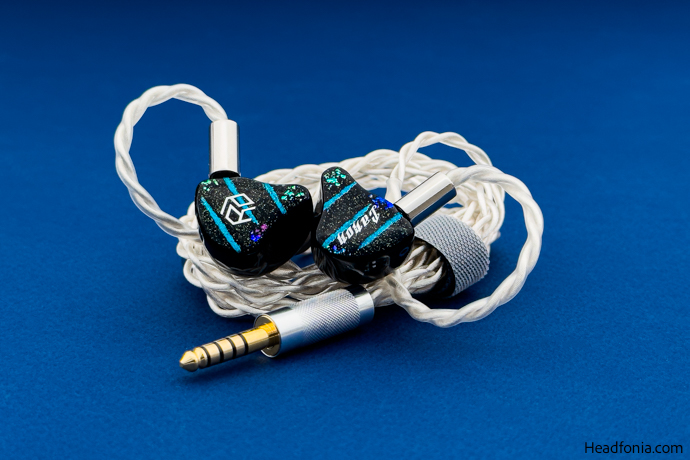
Mid
The midrange is clean, articulate, and airy. The midbass have good weight and stringed instruments, male vocals have realistic body. The midrange is neither forward, nor recessed. The instrument and the vocal texture feel accurate, and the midrange timbre feels natural. The upper midrange of the Canon II is balanced. It feels spacious, articulate and expansive, whilst staying well below the hot areas. The Canon II handles splashy and shouty instruments with ease, thanks to its polite but detailed upper midrange tuning. That being said, the Canon II does not feel as airy as the Canon, but it feels more organic. I honestly don’t remember when was the last time I found an IEM organic in this price bracket.
High
The Canon II’s highs can be described as balanced and polite. There is a good amount of top-end extension and detail. I like the tuning of this part, there is just the right amount of treble density, neither too much nor too little. The resolution of the highs is also quite good. This is a tuning that will satisfy both treble lovers and audiophiles with treble sensitivity, so I found this region particularly well done.
Technical Capability
The Canon II is a technical marvel in its price range. It has impressive resolution combined with a great tonal balance which is hard to come by nowadays. Manufacturers usually go for the old V or full Harman, which renders us, lovers of the neutral warm, unsatisfied. Yanyin successfully crafted a monitor which can stay polite and detailed at the same time. It has great imaging, precise instrument separation, and a wide stage with adequate depth. Its separation is one of the bests in its price range and I can easily say that it surpassed my expectations.
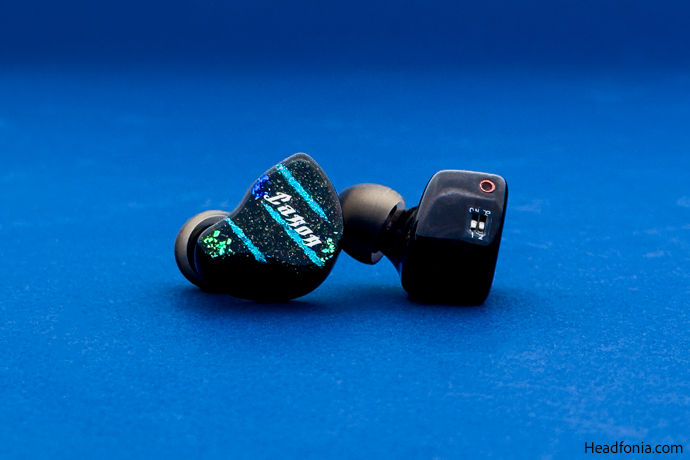
Comparisons
vs. Yanyin Canon ($349 USD)
The OG Canon and the Canon II share many similarities, but there are nuanced differences that set them apart. At a glance, the OG Canon sports a marginally smaller shell. While both IEMs share an identical configuration, the OG Canon utilizes an older version of the bio-diaphragm dynamic driver. Another distinction lies in the tuning switches; the OG Canon offers three diverse tuning switches, whereas the Canon II is equipped with two switches dedicated solely to bass control.
Before diving deeper into their sonic characteristics, let me state that both IEMs feature impressive technical capability versus IEMs in the $300-$500 mark.
The treble presentation is where they notably diverge. The OG Canon’s treble leans towards being brighter and more vivacious, particularly in the upper mid and treble regions. This gives it an airier feel, especially at the top end, resulting in a more extended treble. However, this can sometimes render the OG Canon slightly “shouty” on tracks with multiple instruments.
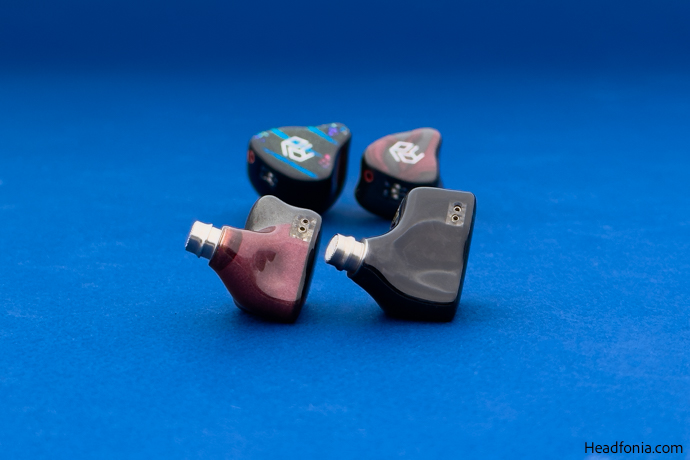
In the bass region, the OG Canon heavily resembles the Canon II when all switches are in the down position for the latter and up for the former. Yet, the Canon II’s mid-bass is somewhat recessed, granting it an added sense of spaciousness that it doesn’t derive from the upper mids. Overall, the OG Canon offers a heavier profile compared to the Canon II, irrespective of the switch settings. While the bass quality remains consistent between the two, the OG Canon’s bass can occasionally feel more artificial, especially on tracks dominated by acoustic instruments. The Canon II, in contrast, offers a tonal balance that edges out the OG Canon, delivering a more organic overall sound.
For those who already own the OG Canon, an upgrade might not be necessary. After all, you already have one of the standout IEMs in this price bracket. However, if you’re on the hunt for a fresh audio adventure within this price range, the Canon II is undoubtedly worth a listen.
vs. Kiwi Ears Orchestra Lite ($249 USD)
The Kiwi Ears Orchestra Lite, boasting eight balanced armature drivers, has garnered significant attention in the $200-$300 price range. Given its prominence, it seemed fitting to juxtapose it against a formidable contender from a slightly higher bracket. The Orchestra Lite, a handcrafted in-ear monitor, is essentially a budget-friendly version of the original Kiwi Ears Orchestra that made its debut in 2021. While it maintains the same number of balanced armature drivers and the lauded tonal balance of its predecessor, it does so at a fraction of the cost.
Diving into the realm of comfort, the Canon II, though bearing similarities in construction, offers a more linear and less protruding inner shell. This design nuance renders it marginally more comfortable. Additionally, its more streamlined nozzle facilitates the use of third-party tips. Those with smaller ears might find the fit of the Orchestra Lite less than optimal.
On the sonic front, both IEMs share a semblance in their sound signatures. However, the Canon II’s bass prowess becomes evident upon the first listen. Its bass response is swifter, more pronounced, and exhibits greater clarity compared to the Orchestra Lite. Furthermore, the Canon II’s treble extends further in the top-end, whereas the Orchestra Lite opts for a gentler approach.
Delving into the technicalities, the Canon II edges out the Orchestra Lite in terms of stage width and depth. This spatial advantage allows instruments more room to breathe, culminating in a more expansive sound signature. Instrument separation on the Canon II is notably crisper, enabling listeners to discern individual instruments with greater ease within the soundstage. In terms of PRaT (Pace, Rhythm, and Timing), the Canon II’s rapid response sets it apart, making it unparalleled in this aspect.

Last Words
To conclude, the Yanyin Canon II Hybrid In-Ear Monitors demonstrate Yanyin’s commitment to delivering excellent audio performance at a competitive price. With its warm-neutral signature, the Canon II excels in bass reproduction, offers a balanced and articulate midrange, and presents highs that cater to both treble enthusiasts and those sensitive to higher frequencies. Its technical prowess, from PRaT to instrument separation and imaging, sets it apart from its rivals in its price bracket. For those seeking a harmonious blend of detail and warmth in the sub $400 range, the Canon II is undoubtedly a front-runner and we think that it is only fair to award it with our recommendation.

Pros
+ Great SQ
+ Great technical capability
+ Great fit and build
+ Great price to performance ratio
Cons
– None at this price







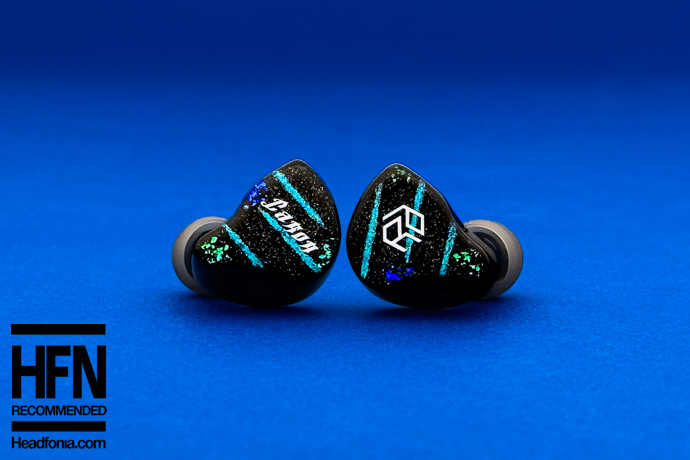
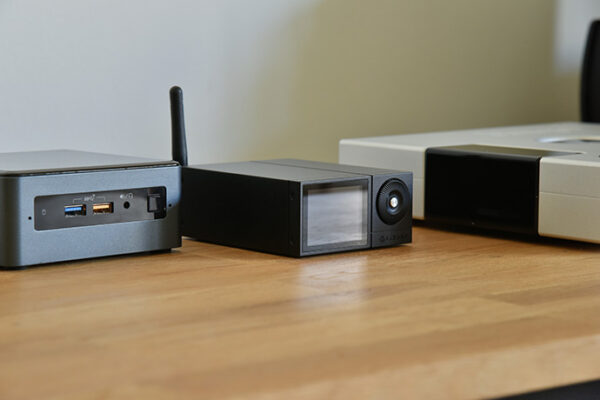

Skrap
Thanks for the well-written review.
How does it compare to the Thieaudio Hype 2, Aful Performer 8, and Xenns Margird Tea2?
Yagiz
The Mangird Tea 2 offers a slightly brighter tonality. The Canon II has a meatier mid-bass and a more tonally balanced signature than the Tea 2. Overall, I’d say the Canon II is superior, mainly because of its technical capabilities.
I don’t have the Performer 8.
Thieaudio Hype 2 is on its way to me.
zepp1108
How does it compare to Aful Performer 8?
Chris
Out of curiosity, if there are no cons at this price, why not give it a 5 out of 5?
Yagiz
Hello Chris,
The star rating reflects our readers’ opinion of the article, not our rating of the product.
Happy listening!
Jonathan
Hello
I own the softears rsv and would like to if the Canon 2 would be a good alternative as a daily driver. I like the sound style of the rsv but want to use it carefully to not to break it. So I’m looking for a cheaper iem to carry all day.
Thanks in advance
Jonathan
Yagiz
Sorry, I don’t have it. If you’re looking for a cheap and durable alternative, I recommend taking a look at the Orchestra Lite from Kiwi Ears.
jijy
Thank you for review. I have interest about Canon2 and Moonlight. Which IEM do you like? If you have Moonlight also, please advise me. I don’t know detail, but Moonlight upgraded to new version.
Yagiz
Both of them are reviewed, read and decide. If you have the budget, go for the Moonlight. Otherwise, Canon II is one of the best IEMs under the 400 mark.
Aleksander Morawski
hey i already have the oracles mk2 and i love them, im looking for something diffrent now in terms – more – warm, and chill, still with that kind of separation and some details but not as much. Is this the right choice?
Yagiz
Yes. I’d recommend switching.
Nash
Would you say the Canon II is a step up from the Thieaudio Hype 4?
Yagiz
Not really, no. They’re on the same level imo, both great sets.
The advantage of the Canon II is the customization, you can play with the switches to fine-tune it up to some extend.
I like the bass of the Hype 4 a little more and it has a more extended top end. Overall, its end-to-end extension is slightly better than the Canon II. Conversely, the Canon II sounds faster and more agile with less bass quantity in comparison.
If you can get a discount on the Canon II, get it for around $300 and you’re golden. It can be often found for 270-ish dollars.
If you can’t get a discount for the Canon II, I’d get the Hype 4, as it sounds slightly better / more natural than the Canon II in terms of tonality. Can’t go wrong with either.
Nash
Makes sense. Any preference of either for Vocals and detail retrieval? I actually was able to get the Hype 4 for $330 in total, but after trying it out I’m considering selling it and getting the Canon II for a bit less.